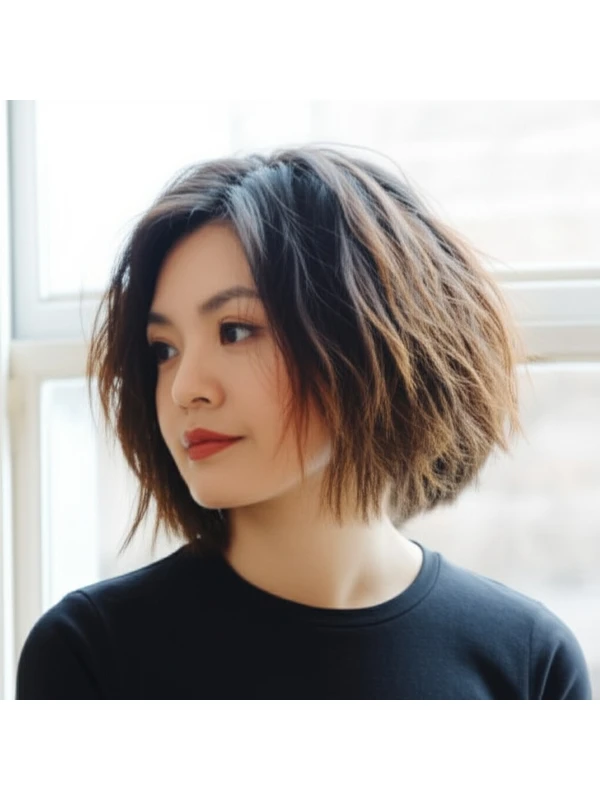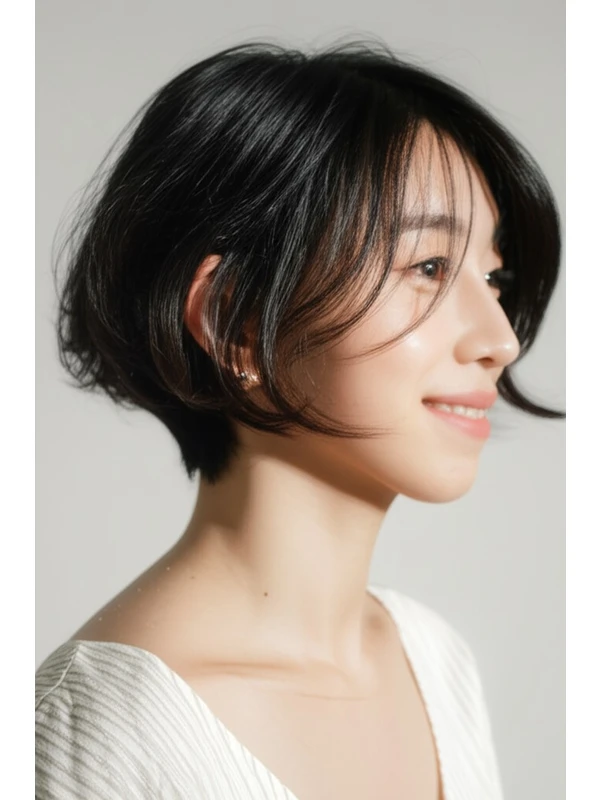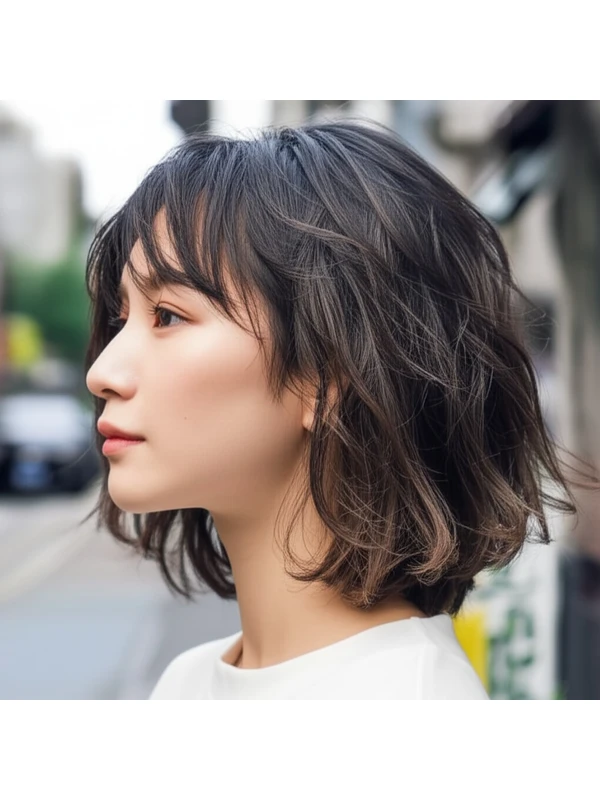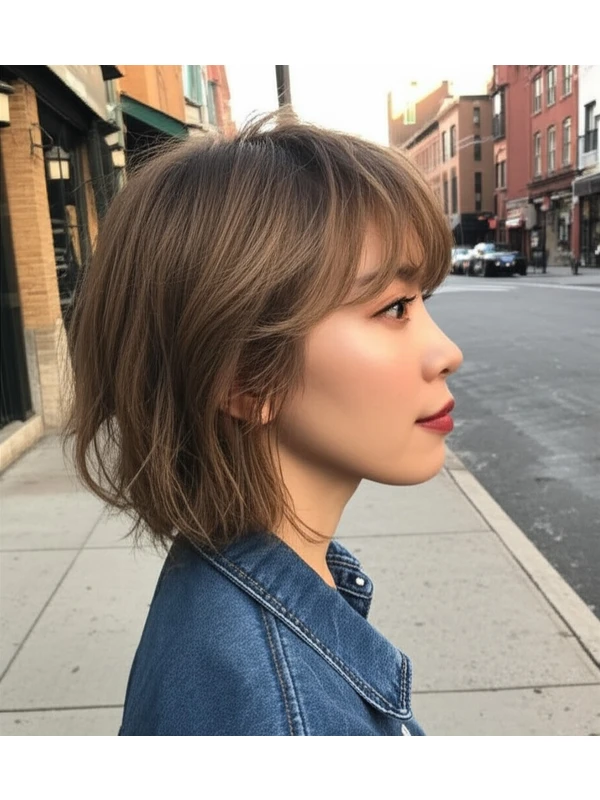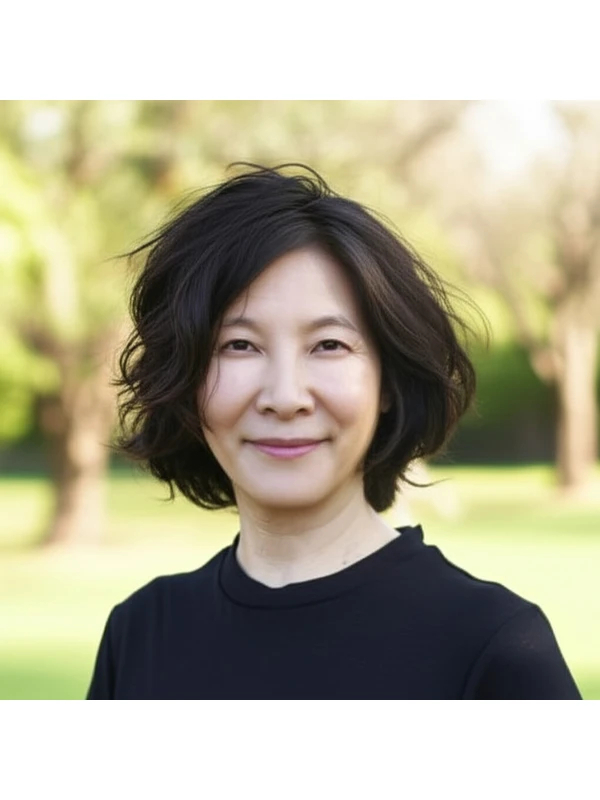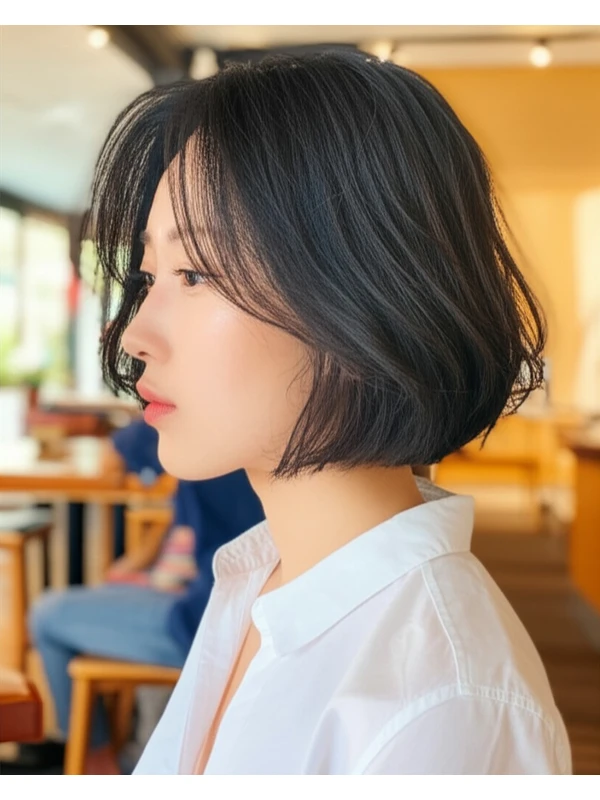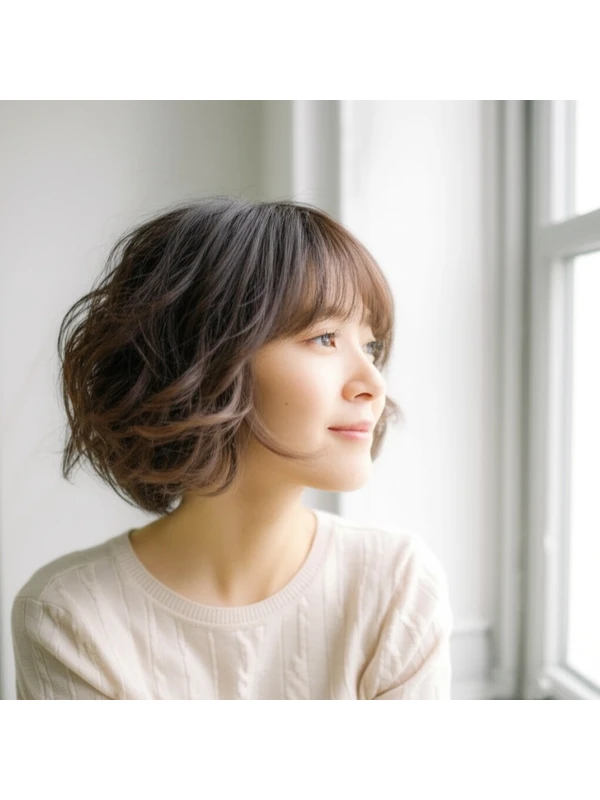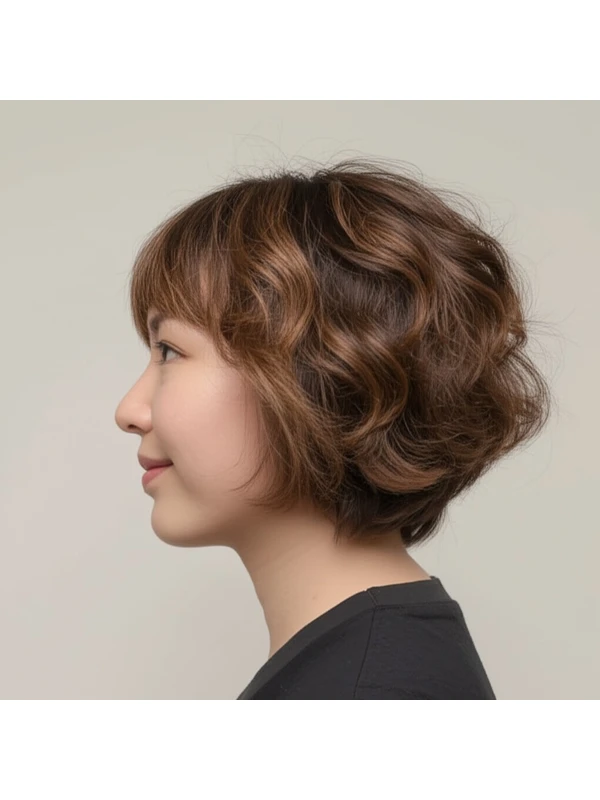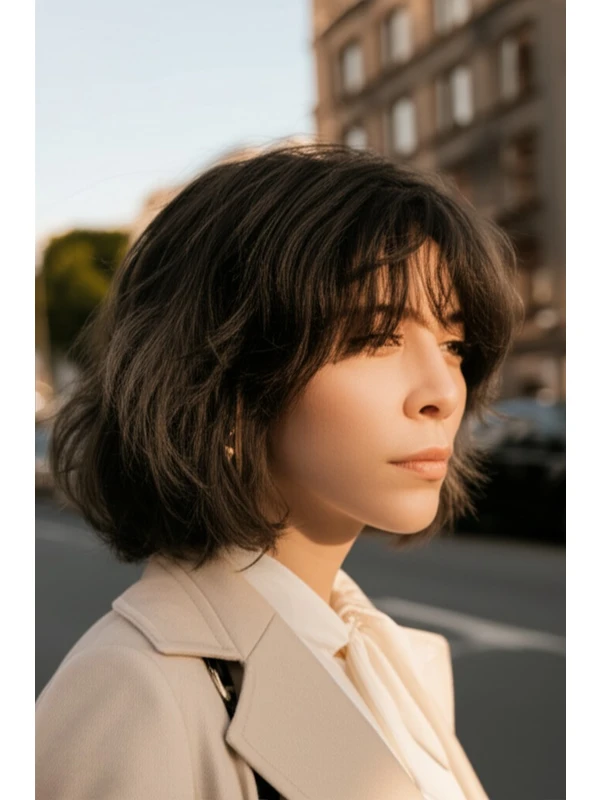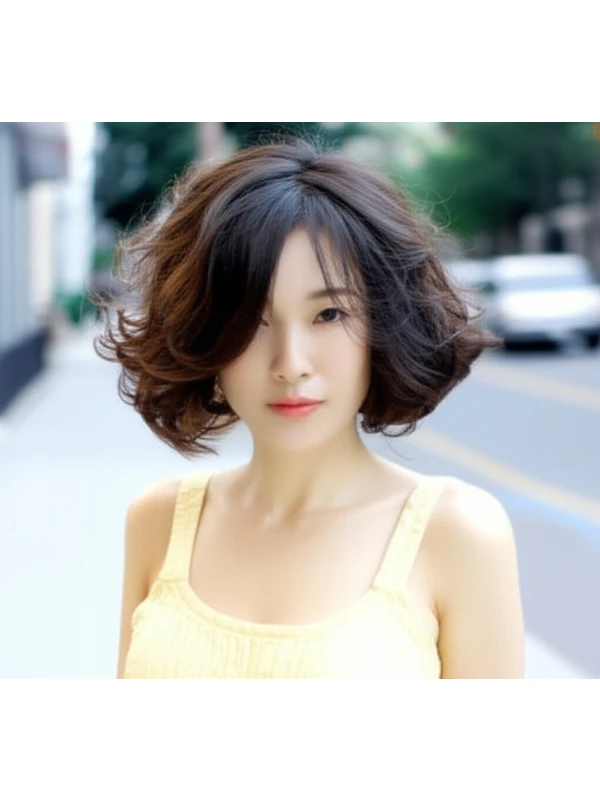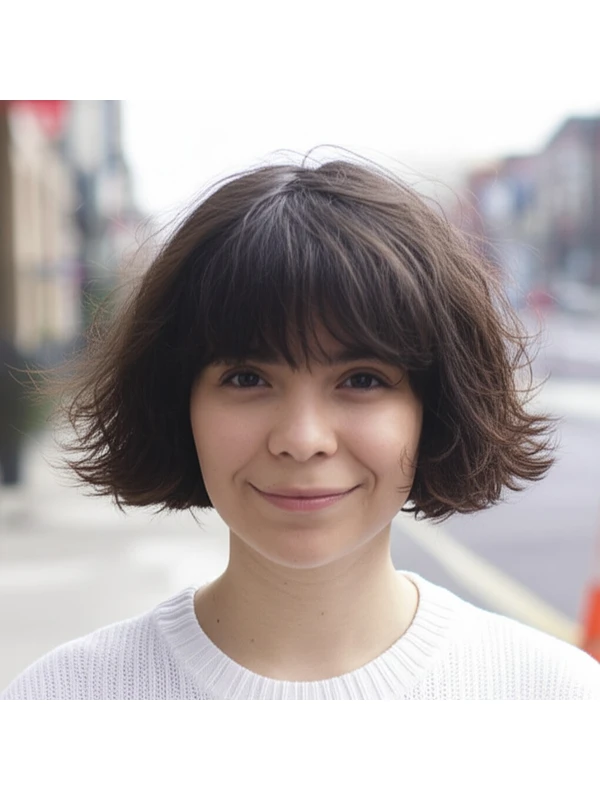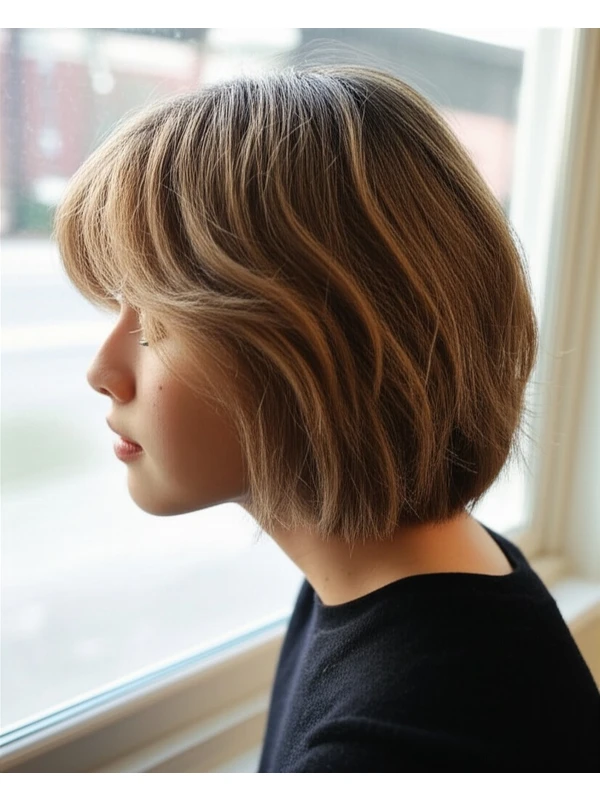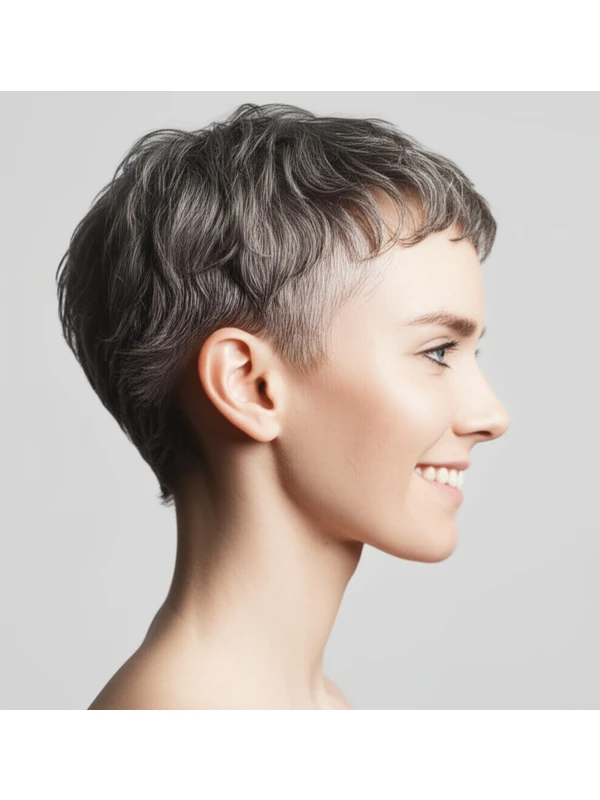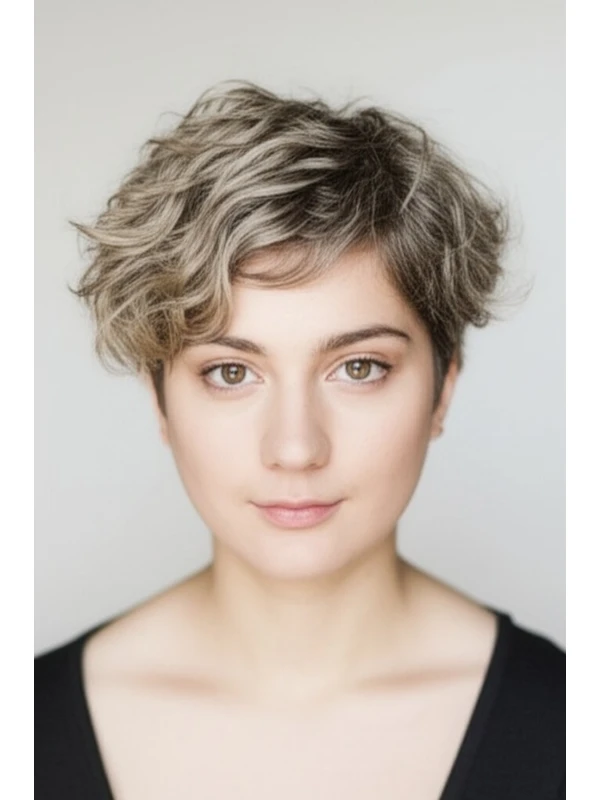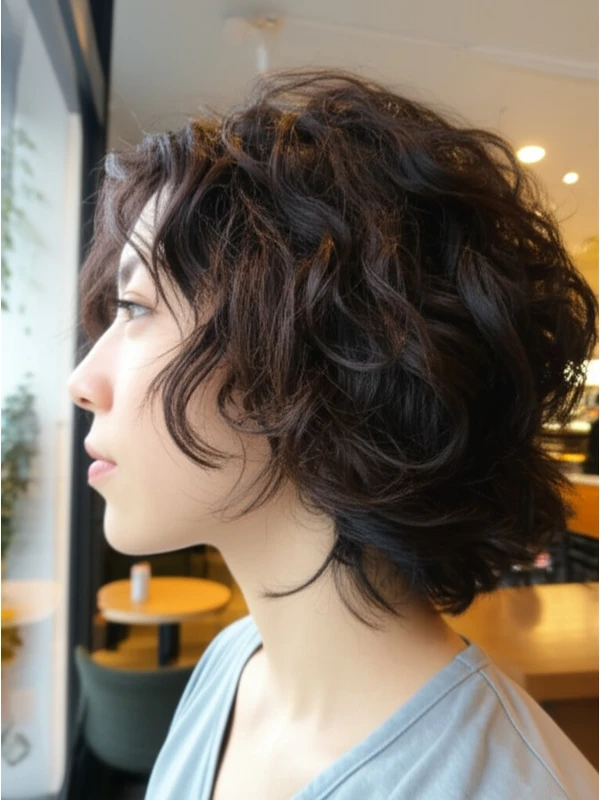#The Air Cut: Effortless Style for Every You
The “air cut” is having a moment – and for good reason! It’s a versatile style that feels modern, effortless, and flattering on many different people. But what exactly is an air cut? Let's dive in to everything you need to know.
#1) Background & Definition: What Makes an Air Cut Unique?
An air cut isn’t about drastic changes or a specific shape. Think of it as a foundational haircut that focuses on removing weight and creating movement. It prioritizes texture over blunt lines, often featuring soft layers throughout the hair. The geometry is less rigid – instead of precise angles, you'll see more blended sections and airy lightness.
Key Features:
- Soft Layers: These are crucial for adding dimension and bounce.
- Removed Weight: The goal is to eliminate bulk, allowing natural movement.
- Face-Framing: Often includes layers that gently shape the face.
- Natural Texture Emphasis: Works with your hair's existing texture, not against it.
Typical Length Ranges: This cut can work anywhere from a collarbone length (lob) to shoulder-length or even longer. The key is how those lengths are layered and shaped.
Alternative Names: You might also hear this style referred to as: “soft layers,” "lived-in hair," or simply, “textured haircut.”
#2) Face Shape Fit: Finding Your Air Cut Harmony
The beauty of the air cut lies in its adaptability. However, certain adjustments can maximize its flattering effect based on your face shape.
- Oval: Lucky you! An air cut generally looks fantastic on oval faces because it balances proportions beautifully. A longer fringe (curtain bangs) or shorter, wispy bangs can add extra personality.
- Round: Air cuts with vertical layers that elongate the face are ideal. Avoid too much volume at the cheeks. Side-swept bangs soften roundness.
- Square: Soften strong angles with gentle layering and a feathered fringe (curtain or wispy). Avoid blunt, harsh lines.
- Heart: Balance a wider forehead by opting for side-swept bangs or a longer, face-framing fringe that blends into the layers. Volume at the jawline can add balance too.
- Diamond: Air cuts with volume around the chin area will soften diamond shapes. A wispy fringe helps to break up width across the forehead.
- Oblong (Long): Add width and dimension with shorter, face-framing layers and a fuller fringe that sits at or just above the eyebrows.
#3) Body Proportions & Height Guidance: Tailoring the Air Cut
Your overall body shape and height play into how an air cut will look on you.
- Petite: Shorter to medium lengths (collarbone to shoulder) work best, preventing hair from overwhelming your frame. Avoid too much volume at the crown.
- Average Height: Most lengths are flattering! Experiment with different layer placements to find what suits your style.
- Tall: Longer lengths (shoulder-length or longer) can help balance a taller stature. Consider face-framing layers that add softness and movement.
Shoulder Width: * Narrow Shoulders: Layers that start higher up on the head will create the illusion of broader shoulders. * Broad Shoulders: Avoid excessive volume at the shoulder line; focus on layering to soften the overall look.
Neck Length: * Short Neck: Avoid very short layers or blunt cuts around the jawline, which can accentuate a shorter neck. Longer face-framing pieces are flattering. * Long Neck: Shorter lengths and more volume at the crown can help balance a longer neck.
#4) Works Best With Hair Types & Densities: Finding Your Perfect Match
The air cut’s versatility shines when adapted to different hair textures and densities.
- Straight Hair: Layers create movement and prevent flatness. A light texturizing product will enhance the airy feel.
- Wavy Hair: Air cuts amplify natural waves, creating a soft, undone look. Ensure layers are strategically placed to avoid unwanted frizz.
- Curly/Coily Hair: This cut can define curls and coils by removing weight and encouraging curl formation. Crucially: shrinkage matters!. Communicate your shrinkage factor (e.g., “my hair shrinks about 30% when it dries”) to your stylist so they cut accordingly.
- Fine Hair: Layers add the illusion of volume, but avoid too many layers as this can make fine hair look even thinner. Root-lifting products are your friend!
- Medium/Thick Hair: Air cuts excel at removing bulk and creating shape in medium to thick hair.
- Density Tips: For very dense hair, more layers will be needed to achieve the desired lightness.
#5) Styling Variations: From Casual Cool to Evening Elegance
The air cut is a blank canvas for styling!
- Sleek vs. Textured: Use smoothing serums or balms for a sleek look; sea salt sprays or texturizing creams enhance texture.
- Middle vs Side Part: A middle part creates symmetry, while a side part adds softness and visual interest.
- Fringe Variations: Curtain bangs are universally flattering, wispy bangs soften features, and blunt (but feathered) bangs add edge.
- Occasion Styling:
- Casual: Air dry with a texturizing product for effortless style.
- Office: Blow-dry smooth or create gentle waves with a curling wand.
- Evening: Add shine and definition with serums and styling products; consider a more polished wave pattern.
#6) Maintenance: Keeping Your Air Cut Fresh
- Trim Cadence: Every 6–8 weeks to maintain shape and prevent split ends.
- At-Home Routine: Gentle shampoo, hydrating conditioner, leave-in treatment (especially for curls/coils).
- Heat vs. Air Dry: Air drying is ideal to preserve the natural texture. If using heat, use a protectant spray.
- Product Checklist:
- Shampoo & Conditioner: Tailored to your hair type.
- Leave-in Conditioner: For hydration and detangling (essential for curls/coils).
- Styler: Texturizing cream, mousse, or serum depending on desired look.
- Finishing Product: Hair spray or shine oil.
- Estimated Daily Styling Time: 5–15 minutes (can be less with air drying!).
#7) Grow-Out Roadmap: Evolution Over Time
- Months 1-3: The shape is fresh and defined, layers are visible.
- Months 3-6: Layers begin to blend together slightly. Regular trims maintain the overall shape. You might notice a slight change in volume as hair grows longer.
- Maintenance Tips: Communicate with your stylist about how you're styling your hair at home so they can adjust the cut accordingly during maintenance appointments.
#8) Color Pairings: Enhancing Your Air Cut
- Cool Undertones (ash blonde, cool brown): Balayage or babylights add dimension and brightness.
- Warm Undertones (golden blonde, warm brown): Copper highlights or a caramel balayage enhance warmth.
- Low-Commitment Options: Root smudging or shadow roots create a softer grow-out.
#9) Season & Occasion Guide: Styling for Every Moment
- Spring/Summer: Embrace lighter textures and brighter colors. Air dry with sea salt spray for beachy waves.
- Fall/Winter: Add warmth with richer tones and deeper layers. A sleek, polished look is perfect for more formal occasions.
- Work: A classic air cut with a smooth finish conveys professionalism.
- Weddings/Parties: Experiment with soft curls or braids to elevate the style.
#10) Cost & Time: Salon Investment
- Salon Time: Typically 45–90 minutes, depending on hair length and complexity.
- Estimated Price Range: Expect a slightly higher cost than a basic trim; it’s usually within the mid-range of salon services.
#11) Pros & Cons: Weighing Your Options
Pros: Versatile, flattering on many face shapes, enhances natural texture, easy to style (often!), creates movement and volume. Cons: Requires regular trims to maintain shape, can look messy if not styled properly, may require more product than a blunt cut.
#12) Salon Consultation Script: Your Questions Answered
Use these prompts when discussing your air cut with your stylist:
- “I love the effortless look of an air cut. Can you show me examples that would suit my face shape?”
- "How many layers will I need to achieve the desired lightness and movement?"
- "What styling techniques do you recommend for maintaining this style at home?"
- “My hair shrinks significantly when it dries – how can we account for that in the cut?”
- “I’m concerned about losing volume. How can we ensure the layers don't make my hair look too thin?”
- "Can you suggest some color techniques to enhance this haircut?"
